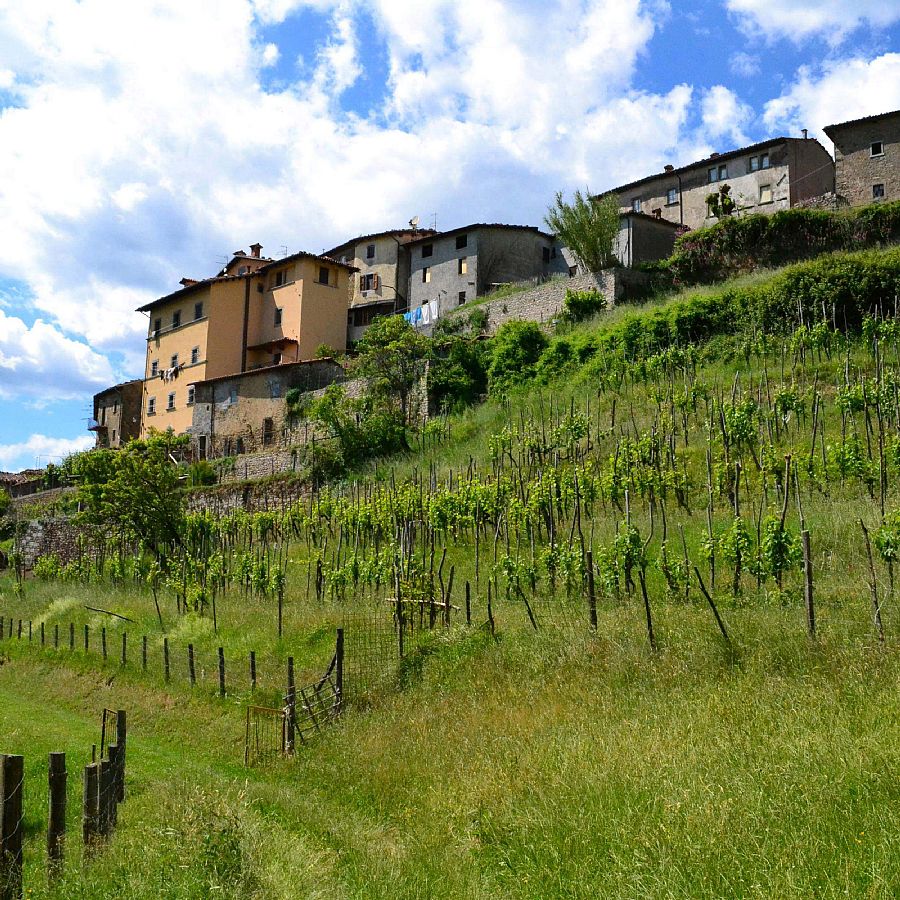Pieve Fosciana

Pieve Fosciana, rural town located in northern Tuscany, took its name from an ancient parish church (Italian, Pieve). The town extends in the countryside, (close to Lucca and Viareggio) with its narrow streets and ancient stone houses, around this sixteenth-century church, which is one of the biggest in Garfagnana.
The hamlets of Bargecchia, Sillico Pontandareto and Pontecosi belong to the same municipality, lay very close to Pieve Fosciana and could be considered even more interesting than the main town itself.
Sillico and Bargecchia, are typical mountain villages with gorgeous views and unique landscapes, while Pontecosi is a little hamlet surrounded by a splendid lake. The latter is worth a visit, indeed. The lake shores house two fountains of thermal water.
Pieve Fosciana lies at 369 metres above the sea level, inside the Piano della Pieve (a small plain, intensely cultivated from time immemorial). A first settlement was born during the Roman Age with the name of Fuscianus, inherited by the current commune. When the Roman Empire collapsed the area was abandoned because of the frequent barbarian invasions, and came back to life during the high Middle Ages. The Lombards spread the Christianity and built the only parish church of the whole Garfagnana region, the medieval church of St Maria di Campori, that made the village more and more attractive.
A famed Franciscan preacher, Ercolano da Piegaro, got the authorization to found some religious communities of the strict Observants. This is how were born two convents dedicated to St Francis: one near Barga and the other one in Pieve Fosciana. Ercolano died as saint in the convent of St Francesco "ai Frati". His relics are still preserved into the church of Pieve.
The church of St Giovanni Battista worth a visit, too as well as the Church of St Magno, Torre di Sillico and ancient water mill still in order, belonging to the Regoli family. The village also boasts the presence of a tiny thermal basin where to get some invigorating baths.
Pieve Fosciana has kept some ancient traditions, like the Carnival, when the local contradas challenge themselves to win some food prizes. During the Shrove Tuesday, the locals "burn the carnival", putting on fire a puppet which symbolizes the feast. At the end, they play the "Grossa" (the biggest bell of the parish church), indicating the first day in Lent. This is definitely a centuries-old tradition.
However, the major folkloric tradition is the Festa della Libertà, dating back to 1369. it comes from the liberation of Lucca thanks to the emperor Carlo IV and occurs every year, the first Sunday after Easter. Those days are religiously dedicated to the celebration of St Annunziata in the parish church. The homonym altar was once used to celebrate the weddings. Nowadays, on the second day of Festa della Libertà are celebrated the silver and golden weddings in town. Since 1800, there is a fair along the Festa, to create a really joyful atmosphere. Custom of the Festa is to taste the typical rice cake (Torta di Riso), which had substituted the original einkorn cake (Torta di Farro).
The village is often enlivened with wine and food festivals. In July there is an exquisite Raviolo Festival, for example.
Have you seen our self-catering apartments in Tuscany?

 Amalfi Coast
Amalfi Coast Sorrento Coast
Sorrento Coast Tuscany
Tuscany Cilento National Park
Cilento National Park Lake Como
Lake Como Rome and Latium
Rome and Latium Umbria
Umbria Capri and Ischia
Capri and Ischia Venice
Venice Puglia (Apulia)
Puglia (Apulia) Liguria
Liguria Sicily
Sicily Lake Maggiore
Lake Maggiore Lombardy
Lombardy Sardinia
Sardinia Lake Garda
Lake Garda Abruzzo and Marche
Abruzzo and Marche Calabria
Calabria

